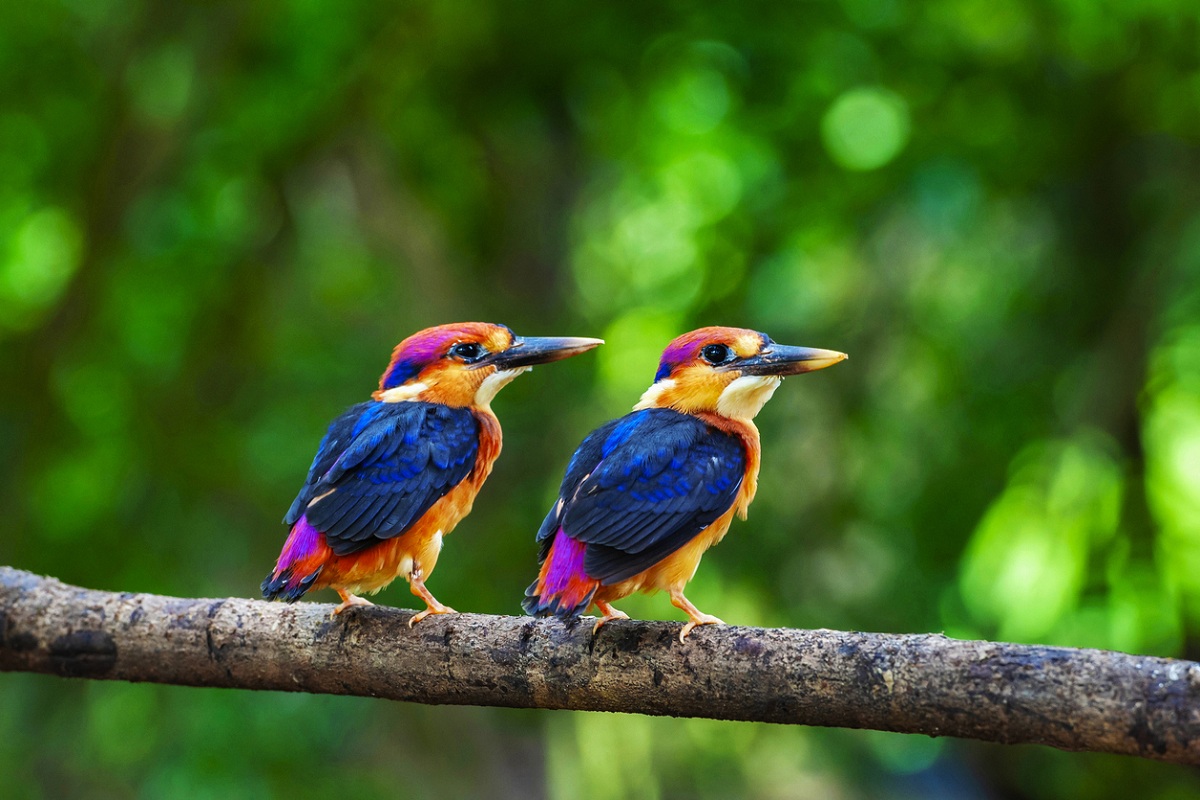In a bid to make people aware of the diverse species of birds in the Mahananda Wildlife Sanctuary, the forest department is all set to organize a bird festival at Latpanchar in the Hills soon. While the department has been organizing such bird festivals in the Buxa Tiger Reserve (BTR) in the Dooars annually, the four-day fifth edition of the fest will begin at Latpanchar on 6 January.
Latpanchar, which forms the highest point of the sanctuary with an average altitude of 4200 ft, is known as the paradise for bird watchers. “We have decided to hold a bird festival at Latpanchar under the Mahananda Wildlife Sanctuary this year.
Different avian species are found there and the sanctuary houses a wide range of birds, many of them endangered. Such an initiative will help record and prepare a list of the species of the birds as well as their numbers,” the principal chief conservator of forests, wildlife, Vinod Kumar Yadav, said today.
Sources said prominent ornithologists, birdwatchers and bird enthusiasts will participate in the event. More than 600 species of birds are found in north Bengal, around 850 in the state and 1200 in the country, Mr Yadav said, adding that the endangered species include the rufous-necked hornbill, oriental pied hornbill and the great hornbill.
He said the department had started documentation of birds after 1997-1998 and a publication on the same will be released. Forest officials today released five endangered and rare male kalij pheasants (Lophurs leucomelana) and 10 red junglefowls (Gallus gallus) in the Mahanadi forest block in the sanctuary.
The kalij pheasants are in Schedule 1 under the Wildlife (Protection) Act, while the red junglefowls are listed under Schedule-IV. “We released the captivebred kalij pheasants. The birds were bred at the pheasant breeding centre at Dowhill in Kurseong.
This bird is mostly found in the Himalayan foothills. The birds can be seen in the BTR, Neroa Valley National Park, and Senchal Wildlife Sanctuary,” Mr Yadav added. The length of the bird is usually 65-73 cm and the weight is between 550-1500 gms. At present, the Padmaja Naidu Himalayan Zoological Park (PNHZP) has 12 kalij pheasants.
The red junglefowl is a tropical member of the pheasant family. Its length is around 65-75 cm and weighs between 485-1360 g. The PNHZP currently houses 43 red junglefowls. Meanwhile, the annual wetland migratory bird count, involving nature lovers, conservationists and bird watchers, will begin on 15 December and will continue till 31 January.
The count will be carried out in the BTR, Gorumara National Park, Jalpadapara National Park, Teesta Barrage at Gazoldoba, and Mahananda Barrage in north Bengal.
Chief conservator of forests, north, Rajendra Jakkhar, PNHZP director Dharmdeo Rai, Darjeeling wildlife divisional officer Jiju Jaesper, director of Bengal Safari: North Bengal Wild Animal Park Badal Dentah, among other officials, were present during the programme at Sukna near Siliguri today.
The department has introduced an hour-long jungle safari for people to visit the core area of the sanctuary and watch wildlife. Mr Yadav flagged off the safari today.
“People and tourists can now experience the wild through the jungle safari. The sanctuary is considered a biodiversity hotspot with rich flora and fauna. There will be five rides in a day, while visitors can book their tickets online, but initially there will be only spot booking system. We hope it will be a popular attraction,” said Mr Jakkhar.
The sanctuary has animals like elephants, leopards and bison. The online booking can be done on www.wbsfda.org. Though a 28-seater bus will begin the safari from 6.15 am, a maximum of 14 visitors will be allowed for each safari amid the coronavirus pandemic. One more bus will be kept on standby. The fares will be Rs 300 for each person that includes the guide.











